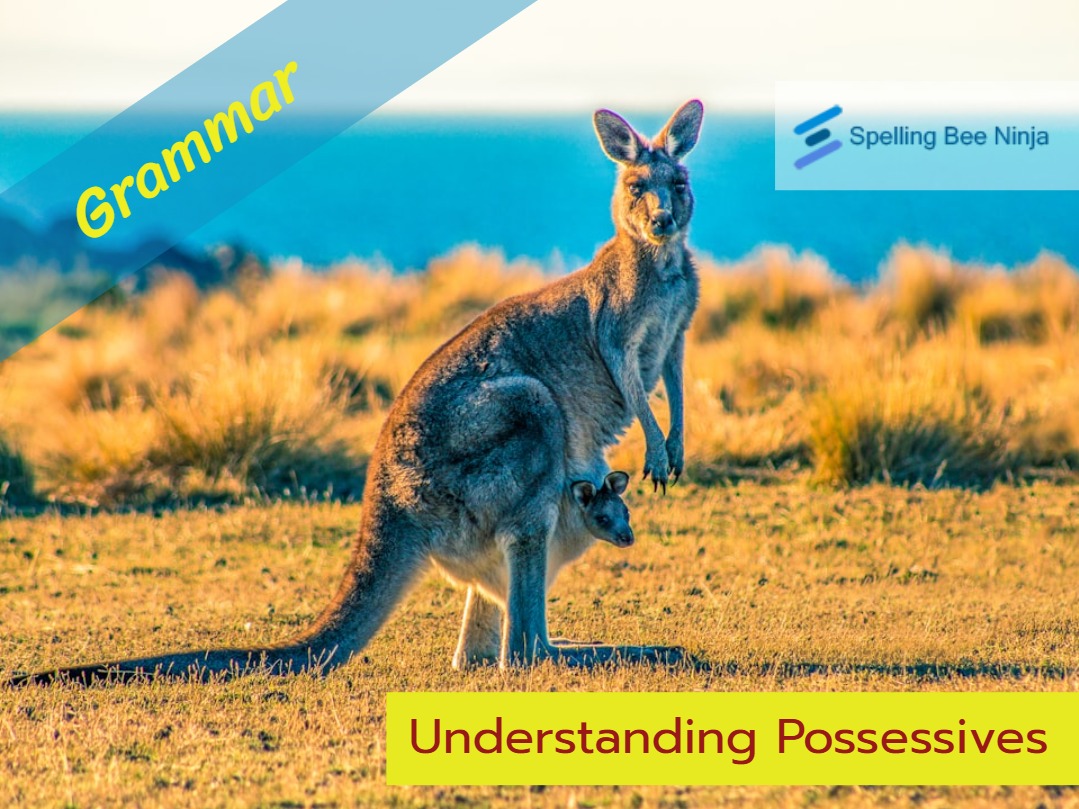Introduction
Possessives are essential in English for showing ownership or relationships between people, places, and things. Mastering possessives helps you speak and write clearly and accurately. In this article, we will explore the three key aspects of English possessives: the use of ‘s, s’, and possessive pronouns. With explanations, examples, and useful tables, you will gain a thorough understanding of this important grammar topic.
1. Using ‘s to Show Possession
The most common way to show possession in English is by adding ‘s to a singular noun.
Rules for ‘s:
- Add ‘s to a singular noun, even if it ends with an “s”.
| Singular Noun | Possessive Form | Example Sentence |
|---|---|---|
| cat | cat’s | The cat’s toy is missing. |
| James | James’s | James’s book is on the table. |
| woman | woman’s | The woman’s car is new. |
Note: In modern English, it is acceptable to write “James'” instead of “James’s” (especially in formal writing), but pronunciation usually adds the extra “-es” sound.
Special Cases:
- For names ending in “s,” both James’s and James’ are correct, but James’s is more common in American English.
- For ancient names (e.g., Jesus, Moses), typically only add an apostrophe: Jesus’ teachings.
2. Using s’ for Plural Possessives
When a plural noun already ends in s, just add an apostrophe after the “s” to show possession.
Rules for s’:
- If the noun is plural and ends in “s,” add only an apostrophe.
- If the noun is plural but does not end in “s,” add ‘s.
| Plural Noun | Possessive Form | Example Sentence |
|---|---|---|
| dogs | dogs’ | The dogs’ owner is kind. |
| students | students’ | The students’ projects were impressive. |
| children | children’s | The children’s playground was renovated. |
| men | men’s | The men’s room is down the hall. |
Important Points:
- Always check if the noun is regular or irregular plural (“children,” “men,” “women,” etc.).
- Irregular plurals form possessives by adding ‘s.
3. Possessive Pronouns
Possessive pronouns show ownership without using an apostrophe. They replace the noun phrase entirely.
List of Possessive Pronouns:
| Subject Pronoun | Possessive Adjective | Possessive Pronoun | Example |
|---|---|---|---|
| I | my | mine | This book is mine. |
| you | your | yours | Is this pen yours? |
| he | his | his | The backpack is his. |
| she | her | hers | That coat is hers. |
| it | its | (rarely used) | The company changed its logo. |
| we | our | ours | The house is ours. |
| they | their | theirs | The bicycles are theirs. |
Key Differences:
- Possessive Adjectives (my, your, his, her, its, our, their) are used before nouns.
- This is my book.
- Possessive Pronouns (mine, yours, his, hers, ours, theirs) are used alone without a noun.
- This book is mine.
Important Note:
- Its (possessive) does not have an apostrophe.
- It’s (with an apostrophe) is a contraction of “it is” or “it has.”
| Word | Meaning | Example |
|---|---|---|
| its | possessive form of “it” | The cat chased its tail. |
| it’s | contraction of “it is” or “it has” | It’s raining today. |
4. Common Mistakes with Possessives
Understanding common errors can help you avoid confusion.
Mistake 1: Confusing its and it’s
- Incorrect: The dog wagged it’s tail.
- Correct: The dog wagged its tail.
Mistake 2: Misplacing Apostrophes
- Incorrect: Womens’ clothing is on sale.
- Correct: Women’s clothing is on sale.
Mistake 3: Forgetting to Add an Apostrophe
- Incorrect: My parents house is big.
- Correct: My parents’ house is big.
Mistake 4: Using an Apostrophe with Possessive Pronouns
- Incorrect: The book is her’s.
- Correct: The book is hers.
5. Possessive Structures
Possessive forms can also be used to describe relationships between two or more nouns.
Single Possession
- Sarah’s dress is beautiful.
- (One person owns something.)
Joint Possession
- John and Mary’s house is big.
- (One house owned together.)
Individual Possession
- John’s and Mary’s cars are different.
- (Two separate cars, one owned by John and one by Mary.)
6. Examples of Possessives in Sentences
| Type | Example |
|---|---|
| Singular Possessive (‘s) | That is Maria’s phone. |
| Plural Possessive (s’) | The teachers’ lounge is upstairs. |
| Irregular Plural Possessive (‘s) | The children’s toys are colorful. |
| Possessive Pronoun | This umbrella is mine. |
| Possessive Adjective | Is that your wallet? |
Conclusion
Mastering possessives in English requires understanding when to use ‘s, s’, and possessive pronouns. Remember:
- Use ‘s for singular nouns.
- Use s’ for plural nouns ending in “s.”
- Use ‘s for irregular plurals.
- Use possessive pronouns without apostrophes.
With practice and attention to detail, you can use possessives confidently and correctly in both writing and speech!


